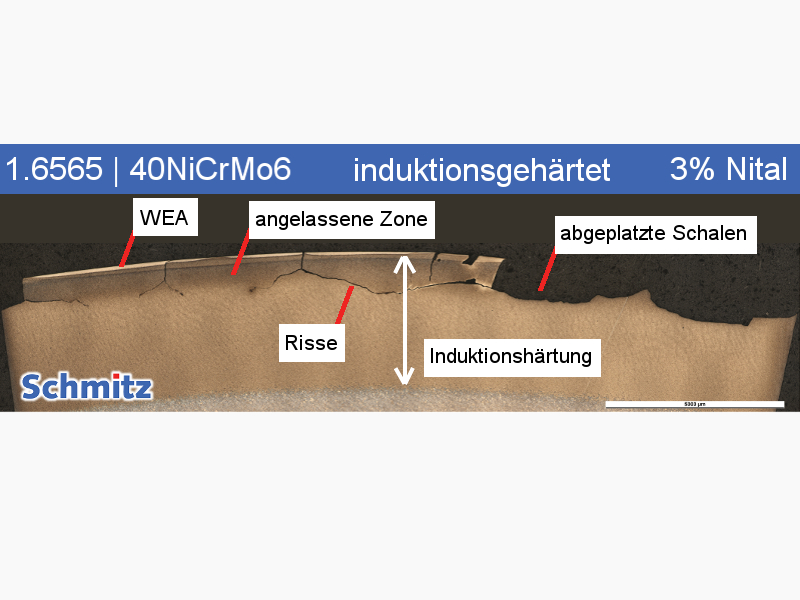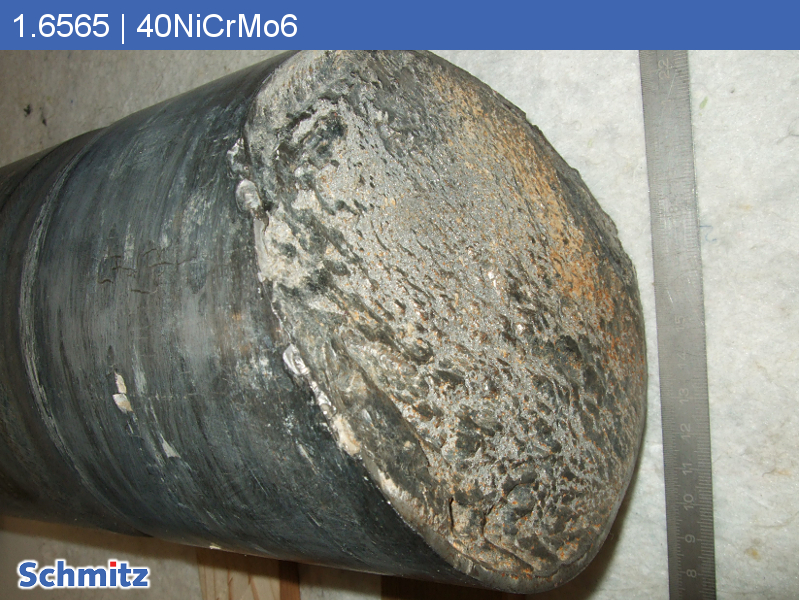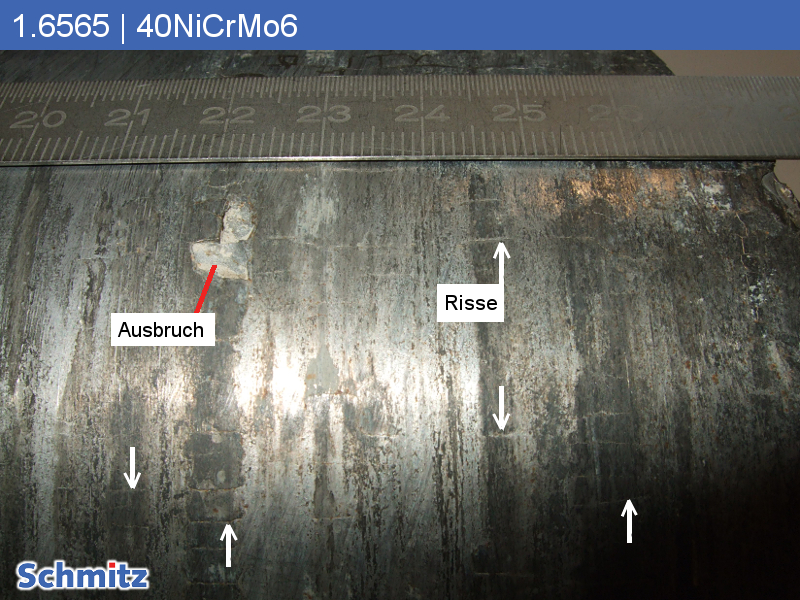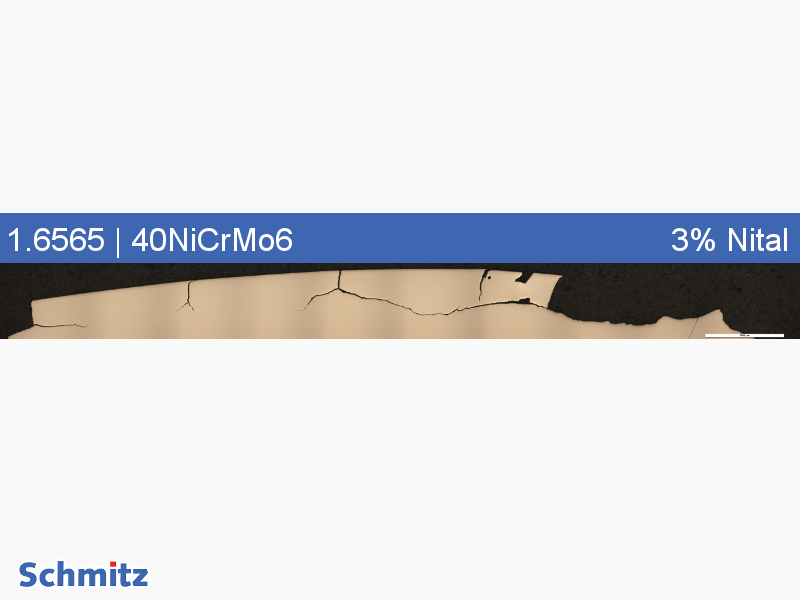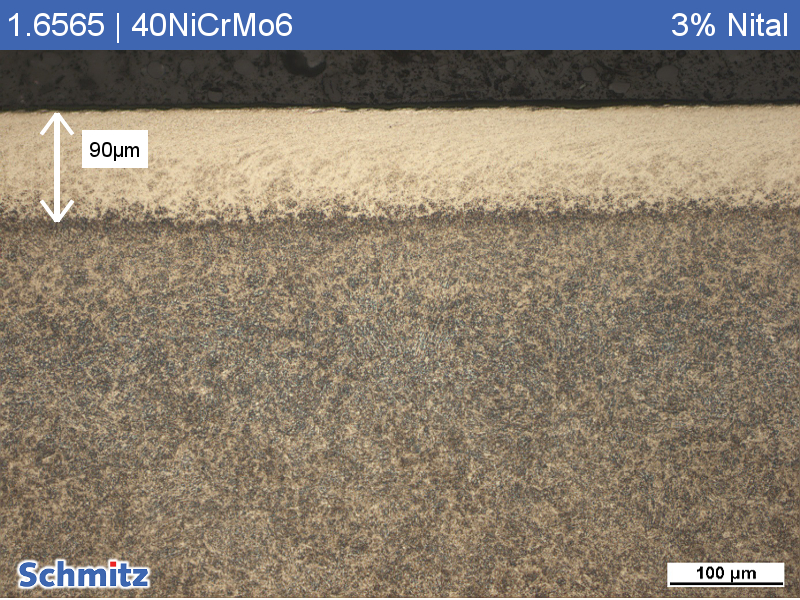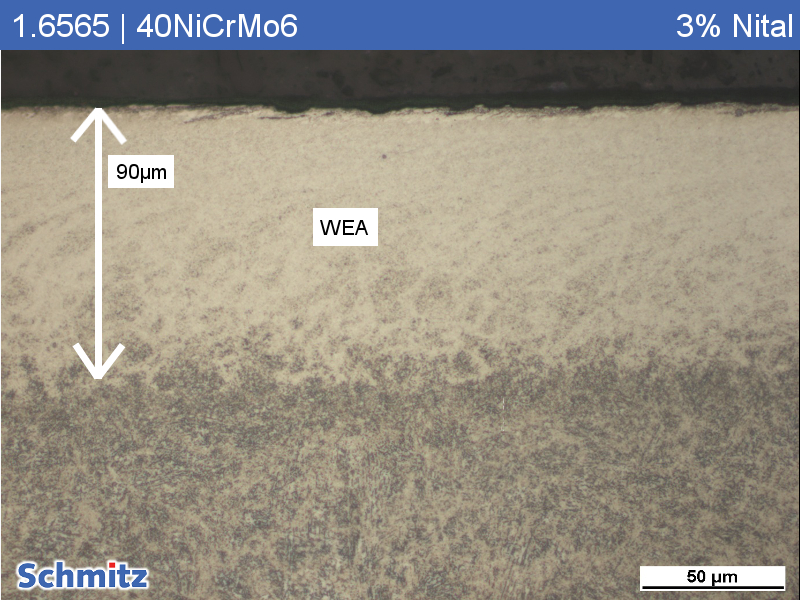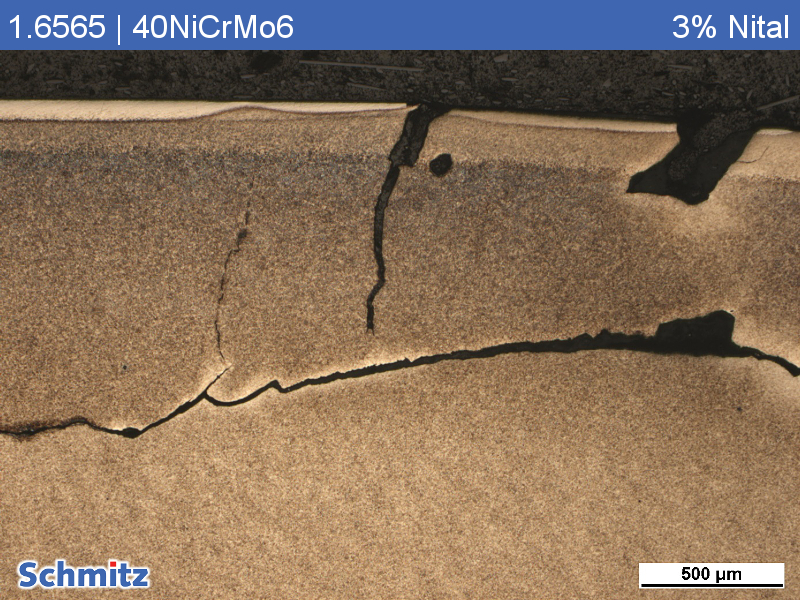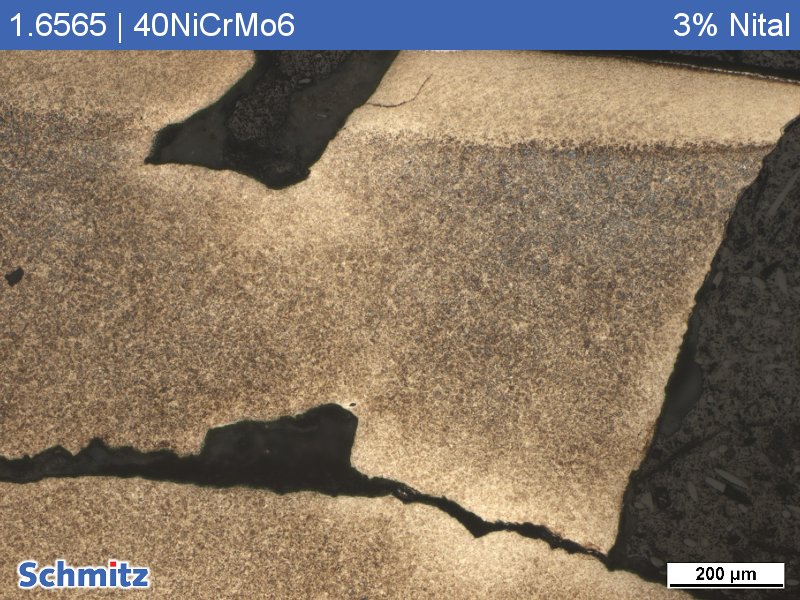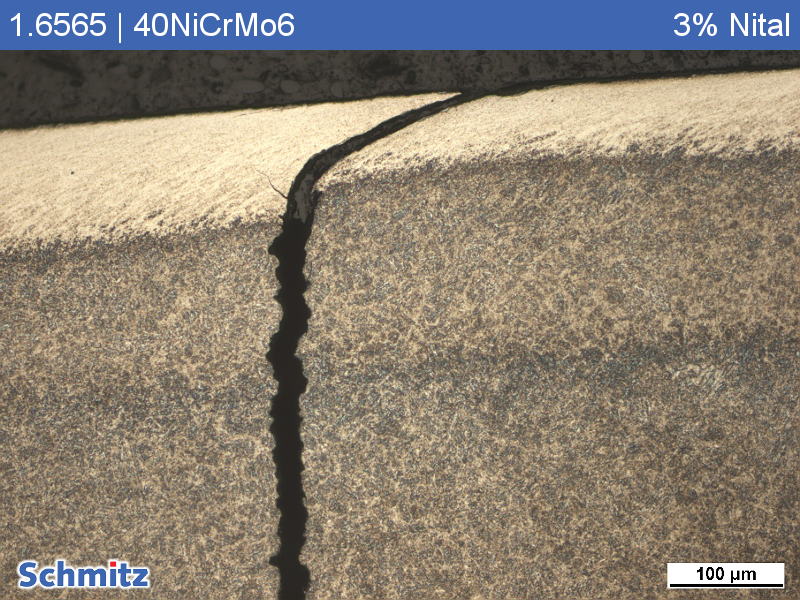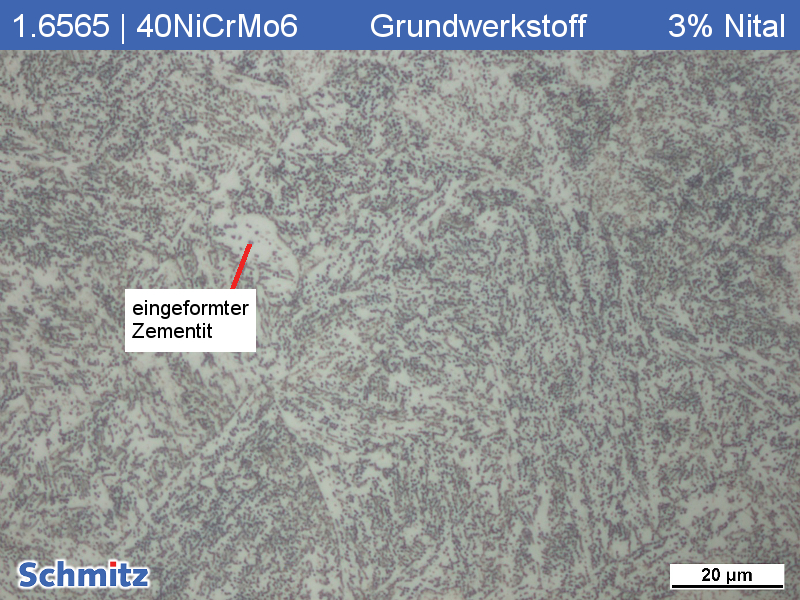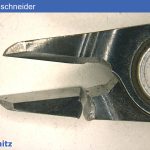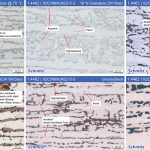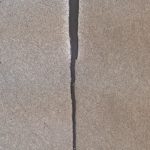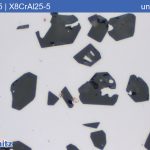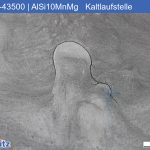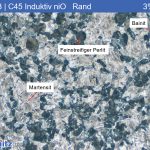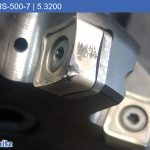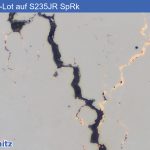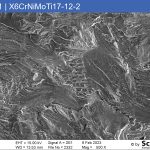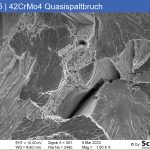1.6565 | 40NiCrMo6 Broken shaft of an impact hammer mill
| Numeric designation | 1.6565 |
|---|---|
| Chemical designation | 40NiCrMo6 |
| State | Broken shaft of an impact hammer mill |
| Etching | 3 % Nital |
The micrographs show a broken shaft of an impact hammer mill made of 1.6565, induction hardened. Macroscopically, numerous cracks are visible in the area of the bearing seat with local surface spallings. A rehardening zone, which varies in thickness, has formed on the surface. This can only be etched weakly and remains almost white. This gave the white layer its name – the so-called WEA (White Etching Area), consisitng of friction martensite (tetragonal martensite). This is the result of extreme friction, such as that caused by slippage in the bearing seat. The hardness of this WEA is 761 HV0.5. This thin and hard layer is very brittle. Incipient cracks in the WEA act as a sharp notch, which due to the high dynamic loads result in a very small fatigue fracture area. The residual fracture surface is about 95% of the shaft cross-section. Below the WEA, there is an area which has been tempered due to the heat effect (friction). Here, the hardness of the induction-hardened rim zone drops to 473 HV0.5. The hardness of the underlying, unaffected induction hardened layer is approx. 500 HV. The matrix consists mainly of perlite with partly molded-in cementite (249 HV0.5).

